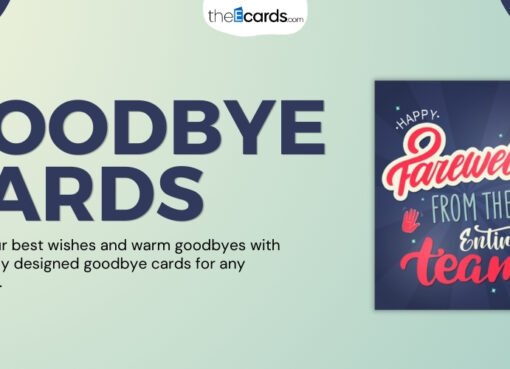Measuring the Impact of Corporate Promotional Products

Are you looking to make a bigger impact with your marketing efforts and really connect with your audience? Corporate promotional products might be the game-changer you need. These tangible items go beyond simple giveaways; they’re powerful tools that can boost brand visibility, enhance customer engagement, and drive sales.
By measuring their effectiveness, you can unlock valuable insights and maximize your return on investment. Let’s dive into how you can assess the true impact of your promotional products and leverage them for greater success.
1. Define Clear Objectives
Before measuring the impact of corporate promotional products, it’s essential to establish clear objectives. What do you aim to achieve with these items? Objectives can range from increasing brand awareness and driving website traffic to enhancing customer loyalty and boosting sales. Clearly defined goals will guide your measurement strategy and help you assess whether your promotional products meet your expectations.
2. Track Brand Awareness
One of the primary purposes of corporate promotional products is to enhance brand visibility. Track how often and where your promotional products are used to measure this impact. To gauge brand recognition, use tools such as social media monitoring, surveys, and customer feedback.
For instance, if you distribute branded items like T-shirts or tote bags at trade shows or community events, monitor the frequency with which these items are seen in public spaces. Social media platforms can also be valuable for tracking mentions and shares related to your promotional products. Use branded hashtags or encourage recipients to post photos of their items to gain insights into how widely your products are recognized.
3. Analyze Engagement and Interaction
Engagement is a crucial metric for evaluating the success of corporate promotional products. Determine how well your items resonate with your audience by analyzing interaction levels. This can include:
- Response Rates: If your promotional products are part of a larger campaign, such as a direct mail piece or email marketing effort, track the response rates. How many recipients took the desired action, such as visiting your website or signing up for a newsletter?
- Customer Feedback: Collect feedback from recipients about their experience with the promotional products. Surveys or follow-up emails can help you understand whether the items were appreciated and how they influenced their perception of your brand.
- Event Engagement: If your promotional products are distributed at events, measure how they contribute to engagement. For example, did attendees spend more time at your booth or participate in more activities due to the incentives provided?
4. Measure Conversion Rates
Ultimately, the effectiveness of corporate promotional products can be evaluated by their impact on conversion rates. Track how many recipients of your promotional items take specific actions that align with your objectives, such as making a purchase or requesting a quote.
To do this effectively, you can use unique codes or QR codes included with your promotional products. These codes can be tracked to see how many people use them to make purchases or sign up for services. Analyzing these metrics through platforms like Ciloo will provide insights into how well your promotional items drive conversions and contribute to your overall business goals.
5. Evaluate Customer Retention and Loyalty
Corporate promotional products can play a significant role in fostering customer loyalty and retention. To assess this impact, monitor changes in customer behavior following the distribution of promotional items. Look for indicators such as:
- Repeat Purchases: Are customers who received promotional products making repeat purchases or showing increased engagement with your brand?
- Loyalty Program Participation: Track how many recipients join or participate in the program if your promotional products are linked to a loyalty program or special offer.
- Customer Satisfaction: Use surveys or feedback mechanisms to gauge customer satisfaction with your brand after receiving promotional products. High satisfaction levels indicate that your items effectively reinforce positive brand experiences.
6. Calculate Return on Investment (ROI)
Measuring the ROI of corporate promotional products involves calculating the financial return compared to the cost of the items. To determine ROI, consider both direct and indirect benefits, such as increased sales, enhanced brand awareness, and improved customer loyalty.
Net profit can be derived from increased sales or new customer acquisitions attributed to the promotional products. By comparing this with the cost of producing and distributing the items, you can evaluate your promotional efforts’ overall effectiveness and financial impact.
7. Adjust and Optimize
Finally, use the insights gained from measuring the impact of your corporate promotional products to refine and optimize your strategy. Identify which items and distribution methods yielded the best results and consider how to replicate or enhance those successes in future campaigns.
Experiment with different promotional products, distribution channels, and messaging to see what resonates best with your audience. Regularly reviewing and adjusting your approach based on performance data will help you maximize the effectiveness of your promotional efforts and achieve your business objectives.
Conclusion
Measuring the impact of corporate promotional products is essential for understanding their role in your marketing strategy and optimizing their effectiveness. By defining clear objectives, tracking brand awareness, analyzing engagement, measuring conversion rates, evaluating customer loyalty, and calculating ROI, you can gain valuable insights into the success of your promotional efforts. This data-driven approach allows you to make informed decisions, enhance your promotional strategies, and drive greater brand impact and customer engagement.



Leave a Comment